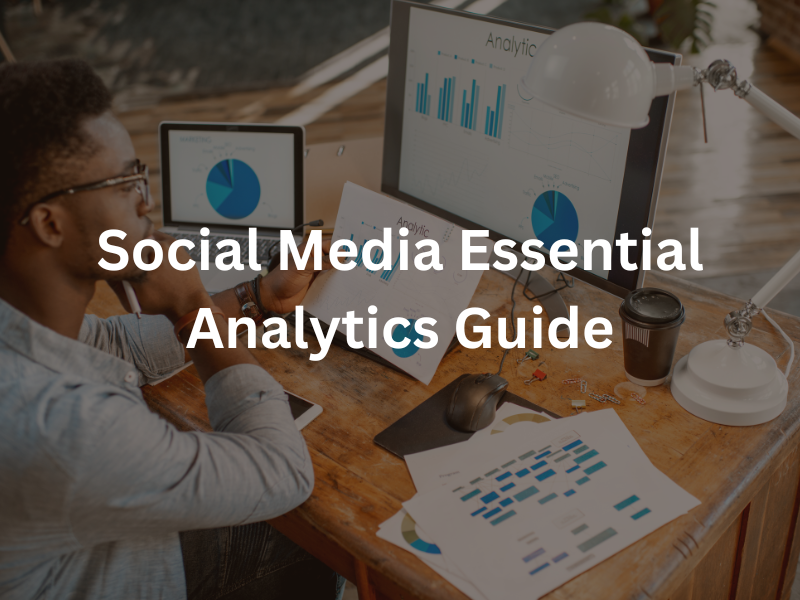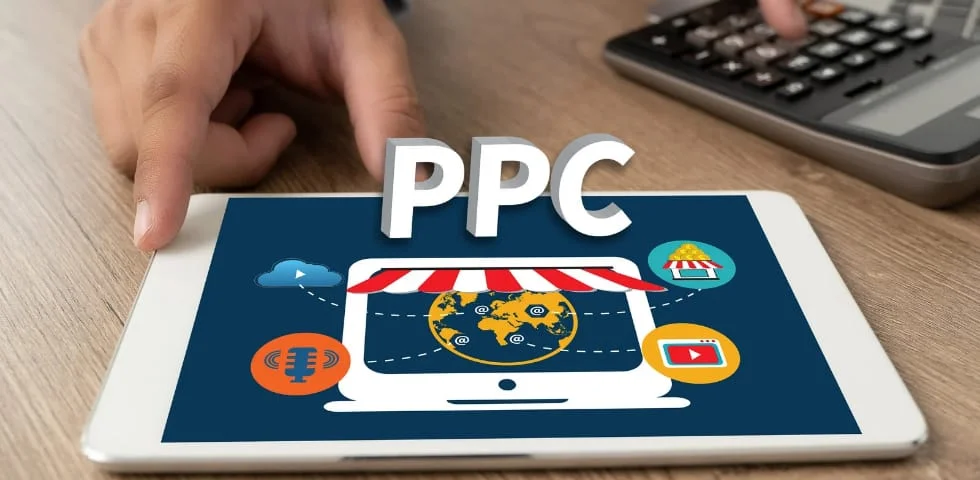In today’s digital age, influencer marketing has emerged as a game-changing strategy for brands looking to increase their visibility and build credibility. According to a recent study, 63% of consumers trust influencer opinions of products much more than traditional advertising methods. This statistic alone highlights influencers’ profound impact on brand perception and consumer behavior.
Influencer marketing involves collaborating with individuals who have a significant and engaged following on social media platforms. These influencers can range from celebrities and industry experts to niche content creators and micro-influencers. By leveraging their reach and trust, brands can connect with their target audience in a more authentic and relatable manner.
The rise of influencer marketing is no accident. It is driven by the fundamental shift in how consumers discover and engage with brands. Unlike traditional advertising, which often feels impersonal and intrusive, influencer marketing thrives on authenticity and personal connections. In this blog post, we’ll explore how you can harness the power of influencer marketing to build brand awareness and credibility, ensuring your brand stands out in a crowded digital landscape.
Introduction to Influencer Marketing

Influencer marketing is the practice of partnering with individuals who have a dedicated and engaged following on social media platforms. These influencers, often seen as experts or trendsetters in their niche, can sway their audience’s opinions and purchasing decisions. This marketing strategy leverages the influencer’s credibility and reach to promote a brand or product authentically.
Definition and History
Influencer marketing isn’t a new concept. It dates back to the 18th century when royalty and celebrities were used to endorse products. The modern version, however, took off with the rise of social media platforms like Instagram, YouTube, and TikTok. These platforms democratized influence, allowing everyday individuals to amass large followings and become influential figures in their own right.
Evolution in the Digital Age
In the digital age, influencer marketing has evolved significantly. Initially dominated by celebrities and mega-influencers, the landscape has shifted towards micro and nano-influencers. These influencers, with smaller but highly engaged audiences, offer brands a cost-effective way to reach specific demographics and niche markets.
The rise of social media algorithms has also played a role in this evolution. Platforms prioritize content that garners high engagement, making influencers’ posts more visible to their followers. This shift has made influencer marketing an essential tool for brands looking to cut through the noise and connect with their audience on a personal level.
Benefits of Influencer Marketing
Influencer marketing offers numerous advantages that can significantly enhance a brand’s visibility and reputation. By understanding these benefits, brands can better leverage influencer partnerships to achieve their marketing goals.

Increased Brand Awareness
One of the most significant benefits of influencer marketing is the potential for increased brand awareness. Influencers have cultivated loyal followings that trust their recommendations. When an influencer shares content about a brand, it introduces the brand to a wider audience that may not have been reached through traditional marketing channels. This expanded reach can lead to greater recognition and awareness of the brand.
Enhanced Brand Credibility and Trust
Influencers are often perceived as experts or trusted figures within their niche. Their followers value their opinions and recommendations. When an influencer endorses a product or service, it lends credibility to the brand. This endorsement acts as a form of social proof, making consumers more likely to trust and purchase from the brand. Authenticity is key here; influencers who genuinely align with a brand’s values can significantly boost its credibility.
Higher Engagement Rates
Influencer marketing often results in higher engagement rates compared to traditional advertising. Influencers create content that resonates with their audience, prompting likes, comments, shares, and other forms of engagement. This interaction is valuable for brands, as it not only increases visibility but also fosters a sense of community and connection with potential customers. Engaged audiences are more likely to convert into loyal customers.
Cost-Effective Marketing Strategy
While celebrity endorsements can be costly, collaborating with micro and nano-influencers is often more affordable and can yield impressive results. These influencers, with smaller but highly dedicated followings, offer brands a cost-effective way to reach specific demographics and niche markets. The return on investment (ROI) for influencer marketing can be substantial, especially when campaigns are well-targeted and executed.
Authentic Content Creation
Influencers are skilled content creators who know how to engage their audience. By partnering with influencers, brands can benefit from high-quality, authentic content that aligns with their marketing goals. This content can be repurposed across various marketing channels, providing additional value beyond the initial campaign.
How to Choose the Right Influencers
Selecting the right influencers for your brand is crucial to the success of your influencer marketing campaign. The right influencer can amplify your message, while the wrong one can lead to wasted resources and missed opportunities. Here are key steps to ensure you choose the right influencers for your brand.

Identifying Your Target Audience
Before selecting influencers, it’s essential to have a clear understanding of your target audience. Identify the demographics, interests, and behaviors of your ideal customers. This information will help you find influencers whose followers align with your target market. For example, if your brand targets young, fitness-conscious women, look for influencers who create content around health, wellness, and fitness.
Researching Potential Influencers
Start by compiling a list of potential influencers within your niche. Use tools like BuzzSumo, HypeAuditor, or social media platforms’ own search functions to find influencers who match your criteria. Look for influencers who regularly post content relevant to your industry and have an engaged following. Pay attention to the quality of their content, their posting frequency, and the overall aesthetic of their profiles.
Evaluating Influencer Authenticity and Engagement
Authenticity and engagement are critical factors in influencer marketing. Evaluate potential influencers based on the following criteria:
- Engagement Rate: Analyze the number of likes, comments, shares, and other interactions their posts receive relative to their follower count. High engagement rates indicate an active and interested audience.
- Authenticity: Look for genuine interactions between the influencer and their followers. Authentic influencers engage with their audience through meaningful conversations and responses.
- Content Quality: Assess the quality of the influencer’s content. High-quality photos, videos, and captions that align with your brand’s messaging are essential.
- Audience Demographics: Ensure the influencer’s audience demographics match your target audience. Tools like Instagram Insights can provide detailed follower demographics.
Assessing Influencer Reach and Impact
While follower count is an important metric, it shouldn’t be the only factor in your decision. Consider the influencer’s reach and the potential impact of their endorsement. Micro-influencers with smaller, highly engaged audiences can sometimes be more effective than macro-influencers with larger, less engaged followings.
Aligning Values and Brand Fit
Choose influencers whose values and personal brand align with your own. A strong alignment ensures a more authentic partnership and resonates better with both the influencer’s followers and your target audience. Review the influencer’s past collaborations, personal values, and public persona to ensure they are a good fit for your brand.
Strategies for Building Brand Awareness
Influencer marketing can significantly boost brand awareness when implemented with strategic planning and execution. Here are several effective strategies to help your brand stand out through influencer partnerships.

Collaborating with Influencers for Product Launches
Product launches present an excellent opportunity for influencer marketing. Partnering with influencers to unveil new products can create buzz and excitement. Influencers can share unboxing videos, product reviews, and first impressions, generating interest and anticipation among their followers.
Example: A beauty brand launching a new skincare line could send products to skincare influencers. These influencers can create tutorials, before-and-after posts, and honest reviews, providing their audience with valuable insights and encouraging them to try the products.
Creating Viral Content with Influencers
Leveraging the creativity and reach of influencers can help create viral content. Encourage influencers to participate in challenges, create unique content, or collaborate with other influencers to amplify the campaign’s reach.
Example: A fashion brand might collaborate with influencers to participate in a styling challenge, where influencers showcase different ways to wear a specific clothing item. This kind of campaign encourages user-generated content, as followers join in and share their own styling ideas, further increasing the campaign’s reach.
Using Influencers for Event Promotions
Influencers can be instrumental in promoting brand events, whether they are in-person or virtual. Their endorsement can drive attendance and engagement, as followers trust their recommendations and are more likely to participate.
Example: A tech company hosting a virtual conference could collaborate with tech influencers to promote the event. Influencers can share event details, offer exclusive promo codes, and provide live coverage, attracting more attendees and enhancing the event’s visibility.
Leveraging Influencer Content for Ads
Repurposing influencer content for paid advertising can extend the campaign’s reach and impact. Influencer-created content often feels more authentic and relatable, making it more effective in driving engagement and conversions.
Example: A fitness brand might use influencer-created workout videos or testimonials in their social media ads. This content, featuring trusted influencers, can resonate more with the audience compared to traditional ads, leading to higher engagement and click-through rates.
Building Long-term Partnerships
Establishing long-term partnerships with influencers can create a sense of consistency and trust. When influencers repeatedly endorse a brand, it reinforces the brand’s credibility and strengthens the connection with the audience.
Example: A travel brand could partner with travel influencers for ongoing collaborations. These influencers can share their experiences with the brand’s services over multiple trips, fostering a deeper relationship with their followers and building sustained brand awareness.
Enhancing Brand Credibility through Influencers
While building brand awareness is crucial, enhancing brand credibility is equally important. Influencers play a vital role in establishing and reinforcing a brand’s trustworthiness and reliability. Here are key strategies to leverage influencers for enhancing brand credibility.

Leveraging Influencer Testimonials and Reviews
Influencer testimonials and reviews are powerful tools for building brand credibility. When influencers share their honest experiences with a product or service, it provides authentic validation that resonates with their audience.
Example: A tech brand launching a new gadget can send the product to tech influencers for review. These influencers can create in-depth reviews, highlight the product’s features, and share their personal experiences. Authentic, positive reviews from trusted influencers can significantly boost the brand’s credibility.
Establishing Long-term Partnerships with Influencers
Long-term partnerships with influencers foster trust and reliability. When an influencer consistently endorses a brand over time, it signals to their followers that the brand is trustworthy and dependable.
Example: A skincare brand might establish a year-long partnership with a beauty influencer. The influencer can share their skincare journey, document their long-term use of the products, and provide ongoing updates. This continuous endorsement builds a deeper connection with the audience and reinforces the brand’s credibility.
Promoting Transparency and Authenticity in Collaborations
Transparency and authenticity are key to successful influencer marketing. Influencers who are honest about their partnerships and provide genuine opinions are more likely to be trusted by their audience.
Example: A food brand could collaborate with a nutrition influencer who openly discusses the partnership and shares honest feedback about the products. By maintaining transparency and authenticity, the influencer helps build trust in the brand.
Showcasing Influencer Expertise
Partnering with influencers who are experts in their field can enhance brand credibility. Their expertise and authority lend additional weight to their endorsements.
Example: A fitness brand collaborating with certified personal trainers or nutritionists can benefit from their expert endorsements. These influencers can provide valuable insights, tips, and recommendations, reinforcing the brand’s credibility in the health and wellness space.
Encouraging User-Generated Content
Influencer campaigns that encourage user-generated content (UGC) can further enhance credibility. When followers see real people sharing their experiences with a brand, it adds an extra layer of authenticity and trust.
Example: A fashion brand could launch a campaign where influencers encourage their followers to share photos wearing the brand’s clothing with a specific hashtag. This UGC campaign not only increases engagement but also showcases genuine customer satisfaction, bolstering the brand’s credibility.
Measuring the Success of Influencer Campaigns
To maximize the effectiveness of influencer marketing, it’s crucial to measure the success of your campaigns. Tracking key metrics and analyzing data can help you understand the impact of your efforts and refine your strategies for future campaigns.

Key Performance Indicators (KPIs) to Track
Several KPIs can provide insights into the performance of your influencer marketing campaigns. Here are some essential metrics to monitor:
- Engagement Rate: This includes likes, comments, shares, and other interactions with the influencer’s posts. A high engagement rate indicates that the content resonates with the audience.
- Reach and Impressions: These metrics measure how many people have seen the influencer’s content. Reach refers to the unique viewers, while impressions count the total number of times the content was viewed.
- Click-Through Rate (CTR): The percentage of viewers who clicked on a link or call to action (CTA) in the influencer’s post. A higher CTR indicates effective persuasion.
- Conversion Rate: This measures the percentage of viewers who took a desired action, such as making a purchase or signing up for a newsletter. It directly correlates to the campaign’s ROI.
- Brand Mentions and Hashtags: Tracking the use of branded hashtags and mentions can help gauge the campaign’s reach and the audience’s engagement.
Tools and Platforms for Measurement
Utilizing the right tools and platforms can streamline the process of measuring influencer campaign success. Here are some popular options:
- Google Analytics: This tool can track traffic and conversions driven by influencer campaigns. It helps analyze the behavior of visitors coming from influencer links.
- Social Media Insights: Platforms like Instagram, Facebook, and Twitter offer built-in analytics to track engagement, reach, and impressions.
- Influencer Marketing Platforms: Tools like HypeAuditor, Traackr, and AspireIQ provide comprehensive analytics, helping brands manage and measure influencer partnerships effectively.
- UTM Parameters: Adding UTM parameters to influencer links can help track specific campaign performance in Google Analytics, providing detailed insights into traffic sources and user behavior.
Analyzing ROI of Influencer Campaigns
Measuring ROI involves comparing the cost of the influencer campaign with the revenue generated. Here’s how to approach this:
- Calculate Total Campaign Costs: Include influencer fees, product costs, and any additional expenses related to the campaign.
- Track Revenue Generated: Use tools like Google Analytics and e-commerce platforms to track sales and conversions attributed to the campaign.
- Analyze Other Benefits: Consider non-monetary benefits such as increased brand awareness, enhanced credibility, and improved engagement, which contribute to long-term growth.
Adjusting Strategies Based on Insights
Regularly reviewing and analyzing campaign performance allows you to refine your strategies. Identify what worked well and what didn’t, and adjust your approach accordingly. This iterative process ensures continuous improvement and maximizes the impact of your influencer marketing efforts.
Case Studies of Successful Influencer Campaigns

Examining successful influencer marketing campaigns can provide valuable insights and inspiration for your strategies. Here are a few notable examples that highlight different approaches and their outcomes.
Case Study 1: Daniel Wellington – Building a Global Brand
Overview: Daniel Wellington, a Swedish watch brand, leveraged influencer marketing to transform from a startup to a global brand in a few years.
Strategy:
- Micro-Influencers: They partnered with thousands of micro-influencers who shared styled photos of the watches on Instagram.
- Branded Hashtags: The hashtag #DanielWellington encouraged users to share their own photos, creating a community around the brand.
- Discount Codes: Influencers offered unique discount codes, driving conversions and allowing the brand to track the effectiveness of each partnership.
Results:
- Increased brand awareness globally.
- Generated a significant amount of user-generated content.
- Substantial sales growth, with over 4 million watches sold in 2016 alone.
Case Study 2: Glossier – Harnessing Community Power
Overview: Glossier, a beauty brand, built its empire by focusing on community-driven marketing and leveraging influencers.
Strategy:
- Customer as Influencer: Encouraged everyday customers to share their experiences and act as micro-influencers.
- Ambassador Program: Developed a structured ambassador program with influencers who genuinely loved the products.
- Engaging Content: Influencers created tutorials, reviews, and unboxing videos, showcasing the brand’s products in real-life scenarios.
Results:
- Built a strong, loyal customer base.
- High levels of engagement and brand advocacy.
- Rapid growth, becoming a billion-dollar company within five years.
Case Study 3: Airbnb – Authentic Storytelling
Overview: Airbnb utilized influencer marketing to promote unique travel experiences and destinations.
Strategy:
- Travel Influencers: Partnered with travel influencers to share authentic stories and experiences.
- Content Collaboration: Influencers created blog posts, YouTube videos, and social media posts about their stays.
- Local Experience Promotion: Highlighted local experiences and unique stays to attract a diverse audience.
Results:
- Enhanced brand credibility and trust through authentic storytelling.
- Significant increase in bookings and user engagement.
- Strengthened brand positioning as a provider of unique travel experiences.
Case Study 4: Gymshark – Community Engagement
Overview: Gymshark, a fitness apparel brand, built a strong community through influencer partnerships and strategic marketing.
Strategy:
- Fitness Influencers: Collaborated with fitness influencers to promote their products and lifestyle.
- Event Hosting: Hosted fitness events and meet-ups, featuring influencers and engaging the community.
- User-Generated Content: Encouraged followers to share their fitness journeys using the hashtag #Gymshark, creating a community-driven content pool.
Results:
- Explosive growth in social media following and engagement.
- Became a leading brand in the fitness apparel industry.
- Increased sales and brand loyalty through strong community engagement.
Trends in Influencer Marketing for 2024
As the digital landscape evolves, so does influencer marketing. Keeping up with the latest trends can help brands stay ahead of the curve and maximize their marketing efforts. Here are the top influencer marketing trends to watch in 2024.

Micro and Nano-Influencers Gaining Traction
Micro (10,000-100,000 followers) and nano-influencers (1,000-10,000 followers) continue to gain popularity. Their smaller, more engaged audiences often result in higher interaction rates and more authentic connections. Brands are increasingly partnering with these influencers for targeted, cost-effective campaigns.
Example: A sustainable fashion brand might collaborate with nano-influencers who are passionate about eco-friendly lifestyles, ensuring that the brand message resonates deeply with their engaged followers.
Rise of Virtual Influencers
Virtual influencers—computer-generated characters with social media accounts—are becoming more prevalent. These influencers offer complete control over brand messaging and can be designed to fit specific demographics.
Example: Lil Miquela, a virtual influencer with millions of followers, collaborates with major brands like Calvin Klein and Samsung, demonstrating the potential reach and impact of virtual influencers.
Emphasis on Authenticity and Transparency
Consumers are becoming more discerning, valuing authenticity and transparency in influencer partnerships. Influencers who are open about their collaborations and provide genuine content will continue to be more successful.
Example: Influencers who disclose their partnerships clearly and provide honest reviews build trust with their audience, leading to more effective and credible brand endorsements.
Diversification Across Platforms
While Instagram remains a dominant platform, other social media channels are growing in importance. TikTok, YouTube, and emerging platforms like Clubhouse offer unique opportunities for influencer marketing.
Example: A beauty brand might leverage TikTok influencers to create engaging, short-form content that goes viral, while also partnering with YouTube influencers for detailed product tutorials and reviews.
Data-Driven Influencer Marketing
Brands are increasingly using data analytics to identify the right influencers and measure campaign success. Advanced tools and platforms provide insights into audience demographics, engagement rates, and ROI, enabling more strategic decisions.
Example: Using platforms like HypeAuditor or Traackr, a tech company can analyze potential influencers’ audience data to ensure alignment with their target market, and track the effectiveness of their campaigns in real-time.
Focus on Long-Term Partnerships
Long-term influencer relationships are becoming more valuable than one-off collaborations. Ongoing partnerships foster deeper connections and more authentic endorsements, benefiting both brands and influencers.
Example: A skincare brand might work with a beauty influencer over several months, documenting the influencer’s skin improvement journey and building a compelling, long-term narrative that resonates with followers.
Integration of Social Commerce
Social commerce—the integration of e-commerce with social media platforms—is on the rise. Influencers can now directly link to products within their posts, making it easier for followers to make purchases.
Example: A fashion influencer can use Instagram Shopping to tag clothing items in their posts, allowing followers to purchase directly from the app, streamlining the shopping experience and boosting sales.
Common Mistakes to Avoid in Influencer Marketing
While influencer marketing can be highly effective, there are common pitfalls that brands should avoid to ensure their campaigns are successful. Understanding these mistakes can help brands develop more strategic and impactful influencer marketing efforts.

1. Not Researching Influencers Thoroughly
Choosing the wrong influencers can lead to ineffective campaigns and wasted resources. It’s essential to thoroughly research potential influencers to ensure they align with your brand values and target audience.
Example: A luxury brand partnering with an influencer known for promoting budget products may confuse and alienate the brand’s target audience.
Solution: Conduct comprehensive background checks, analyze the influencer’s past content, and ensure their followers match your target demographics.
2. Overlooking Engagement Metrics
Focusing solely on an influencer’s follower count without considering engagement metrics can be misleading. High follower counts don’t always equate to high engagement or influence.
Example: An influencer with 500,000 followers but low engagement rates may not provide as much value as one with 50,000 highly engaged followers.
Solution: Prioritize engagement rates and authentic interactions over sheer follower numbers. Tools like Social Blade or Influencer.co can help assess these metrics.
3. Ignoring Authenticity
Followers can easily detect inauthentic endorsements. If an influencer’s promotion of a product feels forced or out of character, it can damage both the influencer’s and the brand’s credibility.
Example: A fitness influencer promoting an unhealthy snack brand may come across as insincere, undermining trust with their audience.
Solution: Ensure that influencer partnerships feel natural and align with the influencer’s genuine interests and values. Authenticity should always be a priority.
4. Failing to Define Clear Campaign Objectives
Without clear objectives, it’s challenging to measure the success of an influencer marketing campaign. Brands need to define specific, measurable goals from the outset.
Example: Running a campaign without clear KPIs may result in ambiguity regarding its success and areas for improvement.
Solution: Set clear, achievable objectives such as increasing brand awareness, driving website traffic, or boosting sales. Use these goals to guide your strategy and measure outcomes.
5. Not Providing Creative Freedom
Restricting influencers’ creative freedom can lead to inauthentic content that doesn’t resonate with their audience. Influencers know their followers best and how to engage them effectively.
Example: Micromanaging an influencer’s content can stifle their creativity and result in posts that feel like advertisements rather than genuine endorsements.
Solution: Provide guidelines but allow influencers the creative freedom to craft content that aligns with their style and resonates with their followers.
6. Neglecting Long-Term Relationships
One-off collaborations can be less impactful than long-term partnerships. Building sustained relationships with influencers fosters deeper connections and more authentic endorsements.
Example: An influencer who promotes a brand just once may not have as much impact as one who consistently endorses the brand over time.
Solution: Invest in long-term partnerships to build ongoing relationships and more meaningful brand advocacy.
7. Overlooking FTC Guidelines
Failing to adhere to FTC guidelines on disclosing paid partnerships can lead to legal issues and damage the brand’s reputation. Transparency is crucial in influencer marketing.
Example: An influencer not disclosing a paid partnership can lead to trust issues with their audience and potential legal ramifications.
Solution: Ensure all influencer partnerships include clear disclosures in line with FTC guidelines. This transparency maintains trust with the audience.
Tools and Platforms for Managing Influencer Campaigns
Managing influencer campaigns efficiently requires the right tools and platforms. These resources help streamline processes, track performance, and ensure effective collaboration with influencers. Here are some essential tools and platforms for managing influencer marketing campaigns.

1. HypeAuditor
Overview: HypeAuditor offers comprehensive analytics to evaluate influencers’ authenticity, audience demographics, and engagement rates. It helps brands identify genuine influencers and avoid those with fake followers.
Key Features:
- Detailed influencer reports
- Audience quality analysis
- Engagement metrics
- Campaign performance tracking
Benefits: By providing in-depth insights, HypeAuditor helps brands make informed decisions and optimize their influencer marketing strategies.
2. Traackr
Overview: Traackr is an influencer marketing platform that assists in managing relationships, tracking performance, and measuring ROI. It provides a robust database of influencers across various industries.
Key Features:
- Influencer discovery and vetting
- Relationship management tools
- Performance analytics
- Campaign reporting
Benefits: Traackr streamlines influencer management, enabling brands to build stronger, long-term relationships and track the impact of their campaigns.
3. AspireIQ
Overview: AspireIQ focuses on community-powered marketing, enabling brands to collaborate with influencers, customers, and advocates. It offers tools for campaign management and content creation.
Key Features:
- Influencer discovery and outreach
- Content collaboration
- Workflow automation
- Campaign analytics
Benefits: AspireIQ facilitates seamless collaboration and ensures brands can manage large-scale influencer campaigns efficiently.
4. BuzzSumo
Overview: BuzzSumo helps brands find the most influential content creators by analyzing social media engagement. It identifies trending topics and top-performing content in various niches.
Key Features:
- Content discovery and analysis
- Influencer identification
- Social media monitoring
- Performance metrics
Benefits: By leveraging BuzzSumo, brands can identify key influencers and create content that resonates with their target audience.
5. Influencity
Overview: Influencity offers a complete suite for managing influencer campaigns, from discovery to performance analysis. It provides detailed influencer profiles and campaign tracking tools.
Key Features:
- Comprehensive influencer database
- Audience demographics and insights
- Campaign management tools
- ROI measurement
Benefits: Influencity simplifies the entire influencer marketing process, ensuring brands can effectively manage and optimize their campaigns.
6. Sprout Social
Overview: Sprout Social is a social media management platform that includes influencer marketing features. It helps brands manage social media campaigns, engage with audiences, and analyze performance.
Key Features:
- Social media scheduling and publishing
- Influencer tracking and engagement
- Performance Analytics
- Audience Insights
Benefits: Sprout Social provides a holistic approach to social media and influencer marketing, enabling brands to manage all aspects of their campaigns in one place.
7. Upfluence
Overview: Upfluence is a versatile influencer marketing platform that supports end-to-end campaign management. It includes influencer discovery, outreach, and performance tracking tools.
Key Features:
- Influencer search and recruitment
- CRM integration
- Campaign workflow automation
- Detailed analytics
Benefits: Upfluence offers a comprehensive solution for managing influencer campaigns, helping brands streamline their efforts and achieve better results.
8. Social Blade
Overview: Social Blade tracks social media statistics and analytics, providing insights into influencers’ growth, engagement, and performance.
Key Features:
- Real-time follower and engagement tracking
- Historical data analysis
- Influencer comparison
- Trend monitoring
Benefits: Social Blade helps brands monitor influencer performance and make data-driven decisions to enhance their campaigns.
Conclusion
Influencer marketing has become an indispensable tool for brands seeking to enhance their visibility and credibility in the digital landscape. By strategically selecting the right influencers, leveraging their reach and authenticity, and continuously measuring campaign success, brands can build meaningful connections with their target audiences.
As the influencer marketing landscape evolves, staying informed about the latest trends and utilizing the right tools can significantly boost the effectiveness of your campaigns. Emphasizing authenticity, building long-term partnerships, and fostering community engagement are key to maximizing the impact of influencer collaborations.
By avoiding common pitfalls and adopting a data-driven approach, brands can ensure their influencer marketing efforts yield substantial returns. The power of influencer marketing lies in its ability to create genuine, relatable content that resonates with audiences and builds lasting brand trust.













